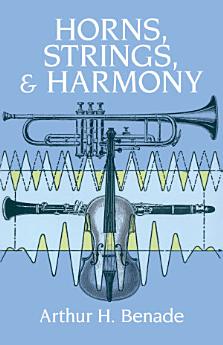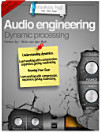Horns, Strings, and Harmony
এই ইবুকখনৰ বিষয়ে
If you've ever wondered how a musical instrument produces the sound it does, this book explains the physics of musical instruments in an engaging and understandable way. Dr. Benade was a nuclear physicist, flutist, and science educator with a special ability to explain complex ideas in a simple, straightforward manner. In this book he brings that ability to bear in elucidating the ways in which music is formed by many different kinds of musical instruments.
Dr. Benade first explores simple and complex vibrating systems and the ear's reception of sound. He then describes the fundamentals of the piano, violin, trumpet, bugle, trombone, oboe, clarinet, flute, saxophone, and many other instruments, demonstrating the sound-making capacities of each. For mechanically inclined readers who are interested in constructing basic instrumental models, Dr. Benade demonstrates how to build a working trumpet, flute, and clarinet.
Enhanced with clear diagrams and easy scientific models, Horns, Strings, and Harmony is a book that will increase the musical enjoyment and understanding of all musicians, music lovers, and amateur scientists.
"The book is commended not only to the 'young person' who seeks to know some physics of musical instruments but also to those who would like to review in simple outline the basic physics of what happens within a musical instrument." — Journal of the Acoustical Society of America.
মূল্যাংকন আৰু পৰ্যালোচনাসমূহ
লিখকৰ বিষয়ে
The Science of Sound
Arthur H. Benade developed his interest in the acoustics of musical instruments growing up in Lahore (British India, now Pakistan) where his father was an educator. His interest in acoustics continued to grow as he earned a PhD in Physics at Washington University in St. Louis and joined the faculty of Case Institute of Technology, now Case Western Reserve University in Cleveland, Ohio, as a nuclear physicist.
The turning point came when the Physical Science Study Committee commissioned him to write the influential concise text, Horns, Strings and Harmony, which Anchor Books launched as a mass market–sized paperback in 1960 and which Dover reprinted in 1992. Known to have inspired generations of teachers, this clear and thoughtful study has sold more than 150,000 copies in all editions and has been translated into several languages. In the decade following the appearance of Horns, Strings and Harmony, Benade completed his more extensive text, Fundamentals of Musical Acoustics, first published by Oxford University Press in 1976 and reprinted by Dover in 1996.
In addition to his two books, Benade wrote more than 100 technical papers, contributed to many symposia, and lectured on acoustics all over the world. His range was far-reaching. Titles of his scholarly papers include "Mathematical Theory of Woodwind Finger Holes," "Resonance-Absorption Cross Section of a Pipe Organ," and "Spherical-Wave Approximation in Horns: Measured and Calculated."
Arthur Benade died in 1988 at the age of 62, one of the twentieth century's seminal figures in the world of acoustical research.




